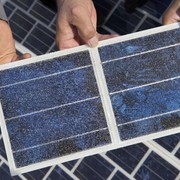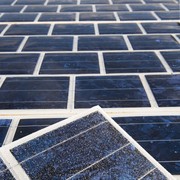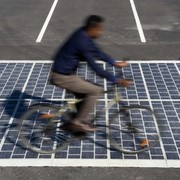
The most romantic European country is about to become the European country with the longest solar road.
According to Ségolène Royal, France's Minister of Ecology and Energy, the government intends to pave 1,000km of roads with photovoltaic panels in the next five years, providing electricity to five million people.
A transport infrastructure company Colas teamed up with INES (France's National Institute for Solar Energy) to work on a solar roadway system, called Wattway, the Solar Road. The system of merely 7 mm thick 'solar strips', which took five years to develop, doesn't require replacing or removing any part of the exisitng road – it is designed in a way to be simply glued onto existing pavement roadway, using technology that was developed by Bouygues subsidiary Colas.
The Wattway solar cells collect solar energy using a thin film of polycrystalline silicon. According to Colas, the material they are using is absolutely strong enough to endure the pressure of regular city traffic (including trucks). As stated on their website, a 1-kilometer stretch of Wattway road is capable of "providing the electricity to power public lighting in a city of 5,000 inhabitants," while 20 m² of Wattway panels is enough to provide all the electricity a single, average French home requires (apart from heating).
France, however, is not the only one that's working on solar roadways. In 2014, the Netherlands, for example, was one of the first countries to open a 100-metre stretch of road, paved with solar panels under tempered glass (1cm thick), transforming sunlight into electricity. The idea is very popular, but which country will be next?











